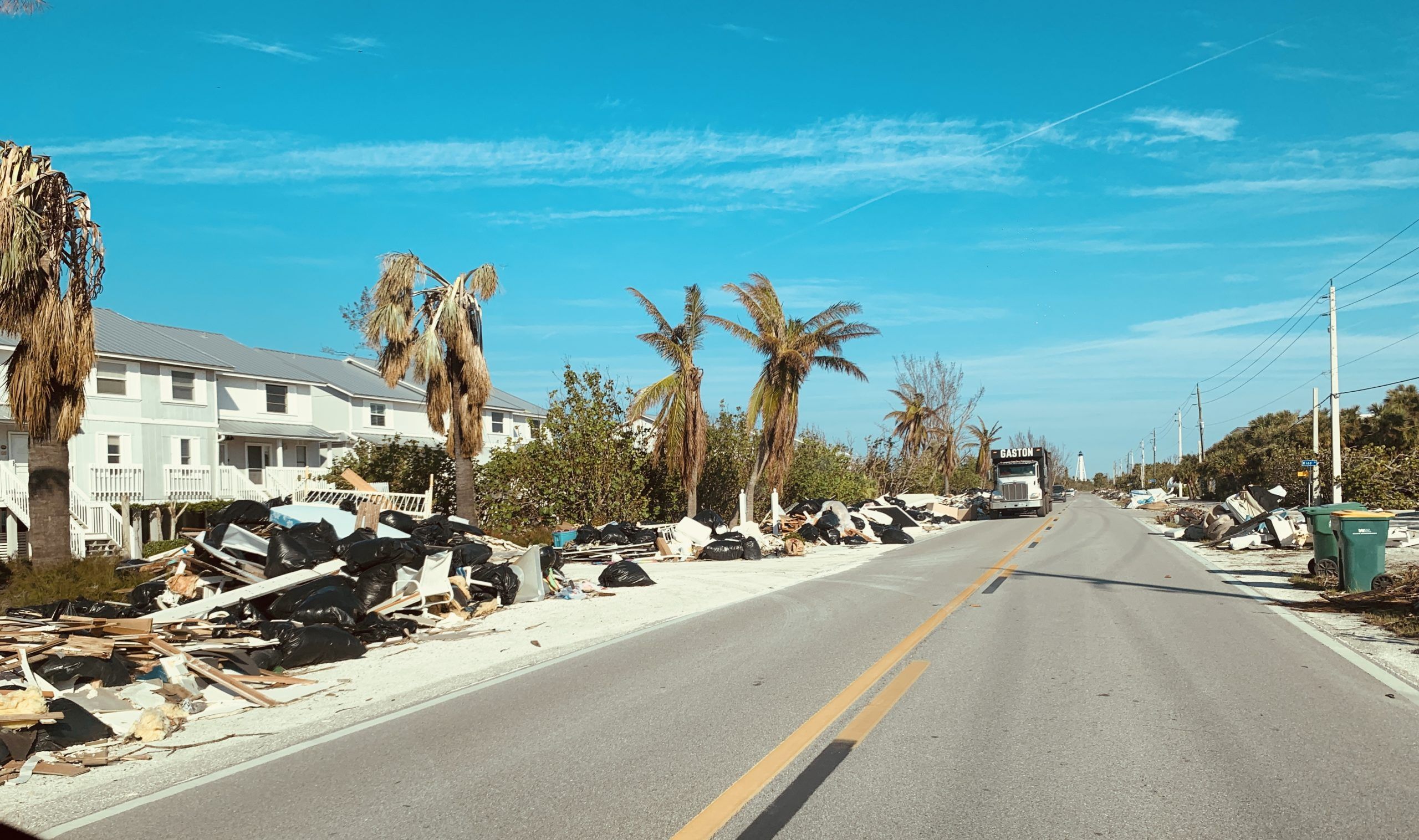Project manager announces time frame for construction and demolition debris pickup from island roadsides

What do you do with more than 20,000 cubic yards of landscape debris? Other than to make a very large salad for a beaver, press your own three-story rolls of paper or have a bonfire that could be seen from space … not much, except to grind it up for mulch.
The mountains of debris at the end of Wheeler Road will soon meet their demise, as a very large chipper shredder is scheduled to be brought to the island by barge. After being taken to Wheeler Road it will begin what might be one of the biggest jobs of its little mechanical life, chipping and shredding so very many cubic yards of wood into tiny pieces.
When that Herculean task is completed, a bed of mulch will be laid down across the property where the construction and demolition debris will be placed. Then that pickup will be begin.
While a good majority of this type of debris is harmless, there are some components that might be. That’s why a pad must be laid down prior to dumping it at the Wheeler Road field.
Most of our construction debris is made up of insulation, drywall, concrete blocks, lumber, shingles, plaster, some electrical conduit, bricks, etc.
However, some pre-treated lumber and varnished wood can be considered to be hazardous, as well as items that contain asbestos or lead-based paint. Some household debris piles could include cans of paint/paint thinner, caulk, adhesives or heavy cleaning products.
There are many items in our homes that are considered to be hazardous to our soil and ground water, so this new step in the clean up process can be a bit more laborious.
If you or your clean up crew are still putting things out to the curb, it’s good to remember the characteristics of waste.
Ignitability, corrosivity, reactivity and toxicity are the four types to keep in mind. There are some types of household products that should never be mixed, some that can self combust if they get too hot sitting in the sun, some that can create a problem if they spill. While most of these things are self-explanatory, it’s always good to be sure and to keep them separate from the rest of the pile. You can always contact the Boca Grande Fire Department during business hours (8 a.m. to 5 p.m.) at (941) 964-2908 if you have questions about the waste codes for any potentially hazardous household materials.
Also, remember that regular garbage that includes food should not be mixed in with C&D debris. “Regular” garbage, so to speak, should be kept in the regular collection cans that are picked up on Thursdays.
Countywide, more than 91,000 cubic yards of debris per day has been collected by 138 debris trucks, each pulling a trailer.
If you see illegal dumping taking place, get the best description of the vehicle and people involved that you can. Then contact the non-emergency line for the Lee County Sheriff’s Office, (239) 477-1000.









